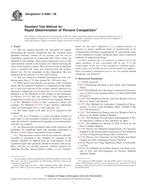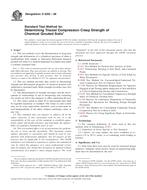Potřebujeme váš souhlas k využití jednotlivých dat, aby se vám mimo jiné mohly ukazovat informace týkající se vašich zájmů. Souhlas udělíte kliknutím na tlačítko „OK“.
ASTM E2392/E2392M-10e1
Standard Guide for Design of Earthen Wall Building Systems (Includes all amendments And changes 9/7/2016).
Automaticky přeložený název:
Standardní Příručka pro návrh hliněné Wall Building Systems
NORMA vydána dne 15.1.2010
Informace o normě:
Označení normy: ASTM E2392/E2392M-10e1
Poznámka: NEPLATNÁ
Datum vydání normy: 15.1.2010
Kód zboží: NS-45203
Počet stran: 10
Přibližná hmotnost: 30 g (0.07 liber)
Země: Americká technická norma
Kategorie: Technické normy ASTM
Kategorie - podobné normy:
Zemní práce. Hloubicí práce. Budování základů. Podzemní práce
Anotace textu normy ASTM E2392/E2392M-10e1 :
Keywords:
Alternative agricultural products, Earthen building systems, IEQ (indoor environmental quality), Rammed earth construction, ICS Number Code 93.020 (Earth works. Excavations. Foundation construction. Underground works)
Doplňující informace
| Significance and Use | ||||||||||
|
Historical Overview—Earthen building systems have been used throughout the world for thousands of years. Adobe construction dates back to the walls of Jericho which was built around 8300 B.C. Many extant earthen structures have been functioning for hundreds of years. However, with the development of newer building materials, earthen building systems have fallen into disfavor in parts of the world where they were once commonly used. At the same time, earthen construction is experiencing a revival in the industrialized world, driven by a number of factors. Sustainability—As world population continues to rise and people continue to address basic shelter requirements, it becomes increasingly necessary to promote construction techniques with less life cycle impact on the earth. Earthen building systems are one type of technique that may have a favorable life cycle impact. Building Code Impact—Earthen building systems have historically not been engineered, but as of the late 20th Century it is for the first time in history possible to reliably apply rational structural design methods to earthen construction. A large number of earthen building codes, guidelines and standards have appeared around the world over the past few decades, based upon a considerable amount of research and field observations regarding the seismic, thermal and moisture durability performance of earthen structures. Some of those standards are: |
||||||||||
| 1. Scope | ||||||||||
|
1.1 This standard provides guidance for earthen building systems, also called earthen construction, and addresses both technical requirements and considerations for sustainable development. Earthen building systems include adobe, rammed earth, cob, cast earth, and other earthen building technologies used as structural and non-structural wall systems. Note 1—Other earthen building systems not specifically described in these guidelines, as well as domed, vaulted, and arched earthen structures as are common in many areas, can also make use of these guidelines when consistent with successful local building traditions or engineering judgment. 1.1.1 There are many decisions in the design and construction of a building that can contribute to the maintenance of ecosystem components and functions for future generations. One such decision is the selection of products for use in the building. This guide addresses sustainability issues related to the use of earthen wall building systems. 1.1.2 The considerations for sustainable development relative to earthen wall building systems are categorized as follows: materials (product feedstock), manufacturing process, operational performance (product installed), and indoor environmental quality (IEQ). 1.1.3 The technical requirements for earthen building systems are categorized as follows: design criteria, structural and non-structural systems, and structural and non-structural components. 1.2 Provisions of this guide do not apply to materials and products used in architectural cast stone (see Specification C1364). 1.3 The values stated in either SI units or inch-pound units are to be regarded separately as standard. The values stated in each system may not be exact equivalents; therefore, each system shall be used independently of the other. Combining values from the two systems may result in non-conformance with the standard. 1.4 This standard does not purport to address all of the safety concerns, if any, associated with its use. It is the responsibility of the user of this standard to establish appropriate safety and health practices and determine the applicability of regulatory limitations prior to use. |
||||||||||
| 2. Referenced Documents | ||||||||||
|
Podobné normy:
Historická
15.11.2013
Historická
1.7.2008
Historická
1.2.2008
Historická
1.10.2009
Historická
1.7.2014
Historická
1.1.2008
Odebírejte informace o nově vydaných normách ZDARMA:
Chcete pravidelně odebírat informace o nově vycházejících normách z celého světa a to zcela zdarma?
Přihlašte se k odběru. Vše je velice jednoduché a absolutně ZDARMA.
Na výběr máte vydavatele z celého světa.



 ASTM D5030/D5030M-13..
ASTM D5030/D5030M-13.. ASTM D5079-08
ASTM D5079-08 ASTM D5080-08
ASTM D5080-08 ASTM D5102-09
ASTM D5102-09 ASTM D5195-14
ASTM D5195-14 ASTM D5202-08
ASTM D5202-08
 Cookies
Cookies
